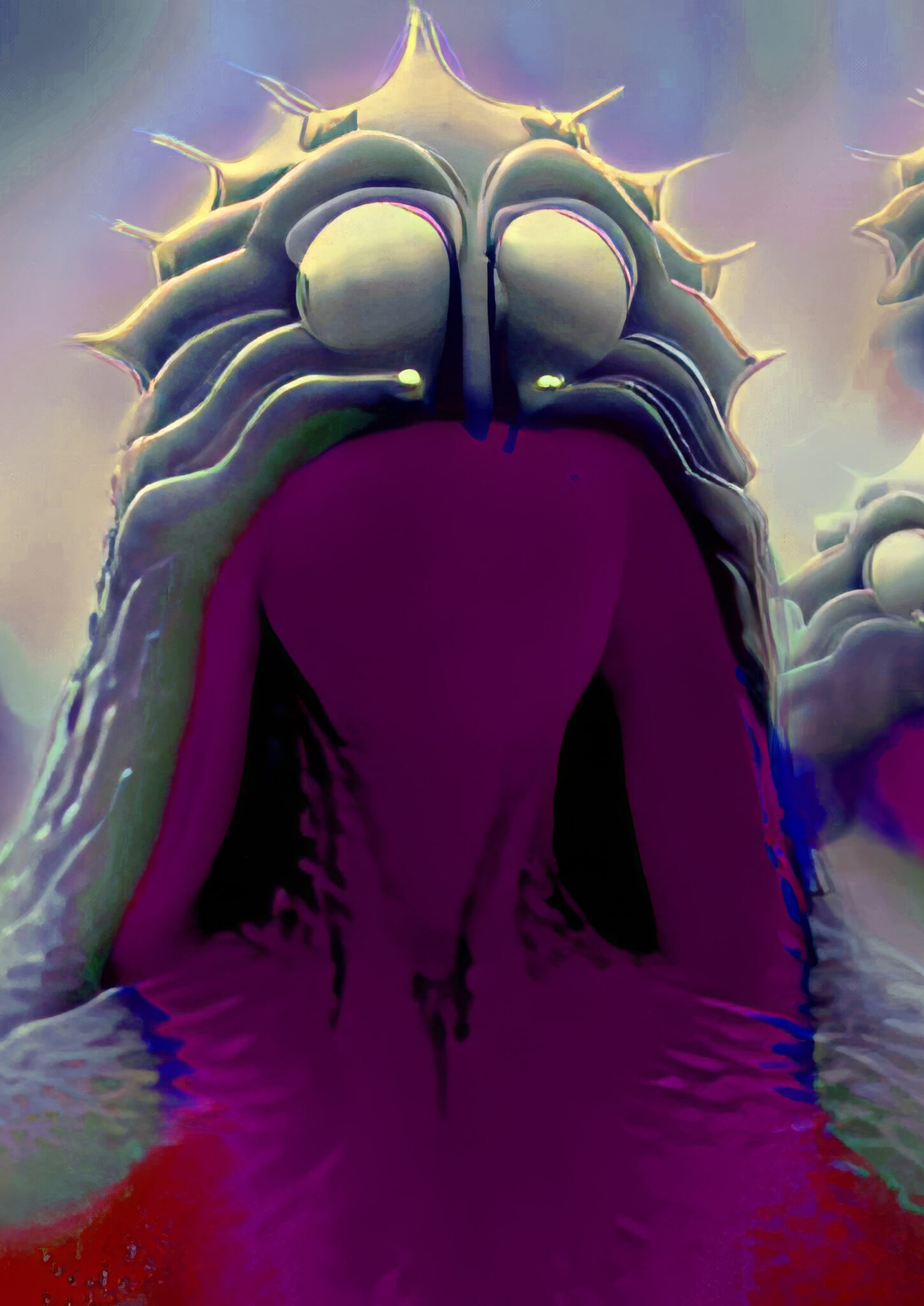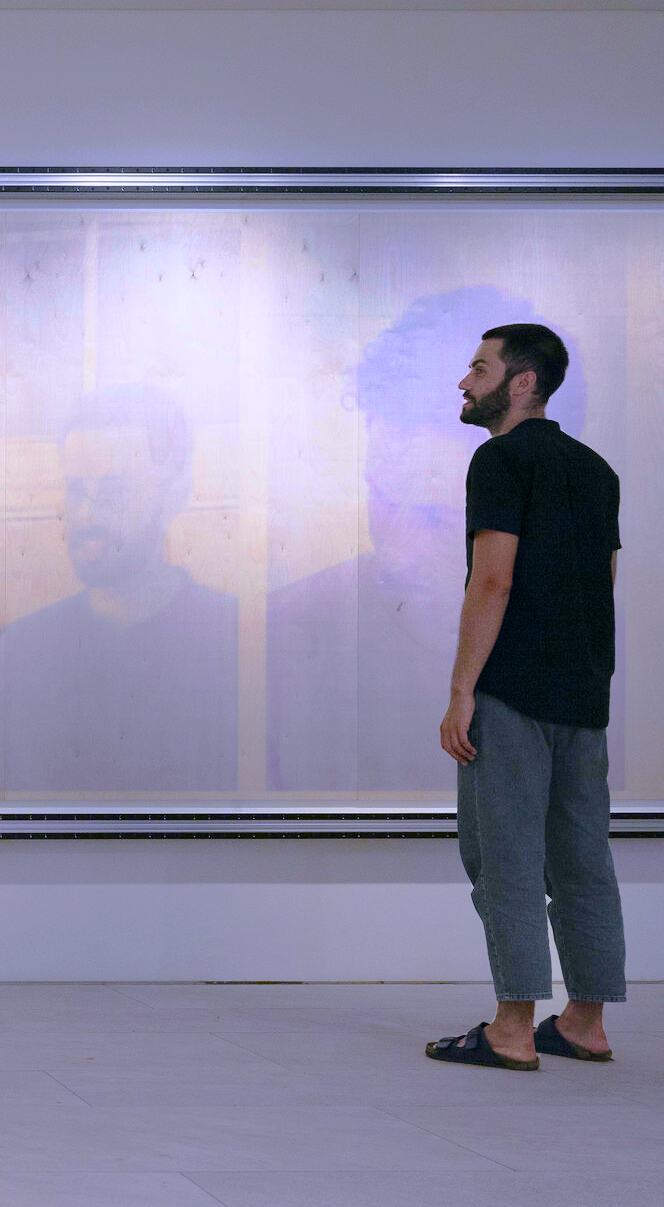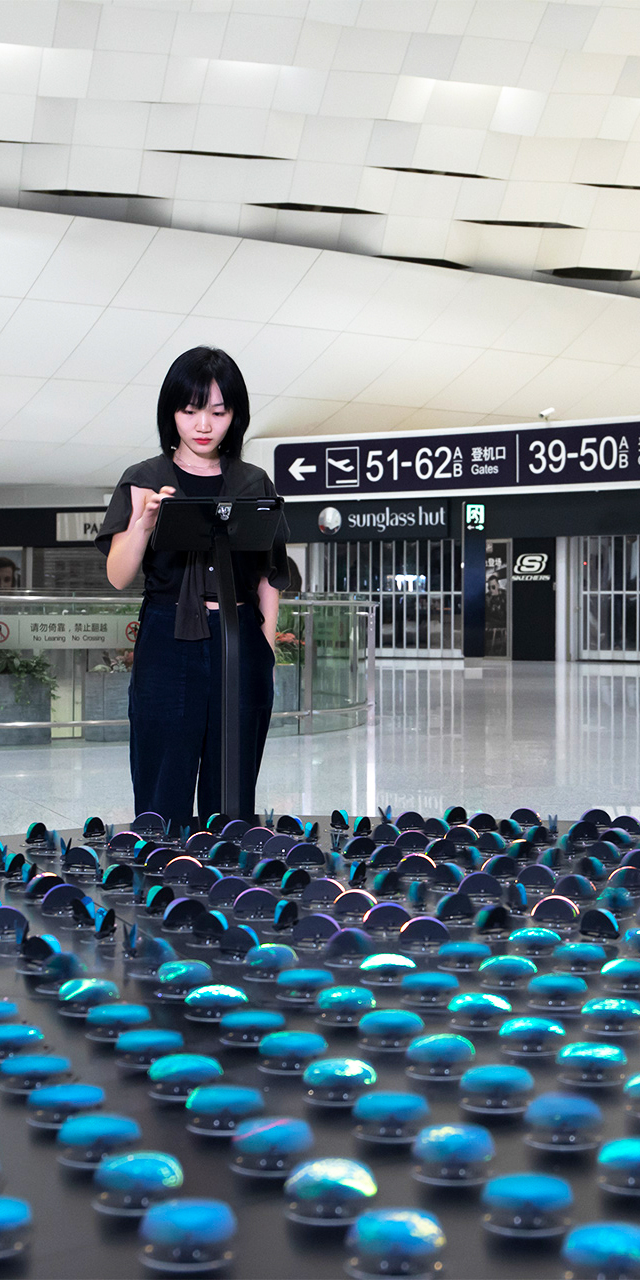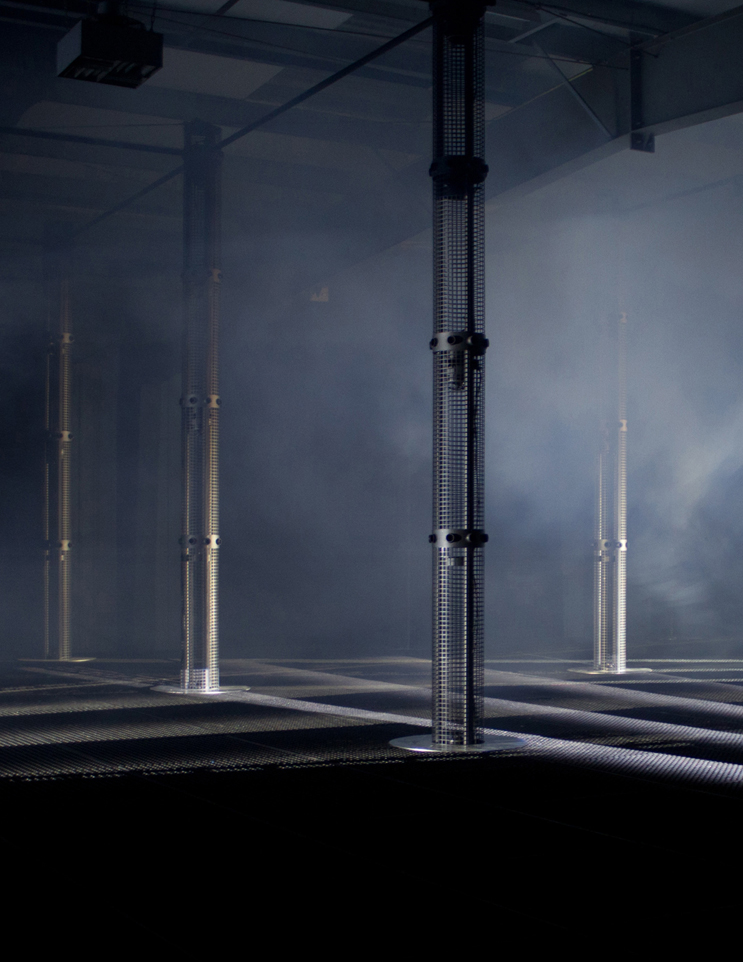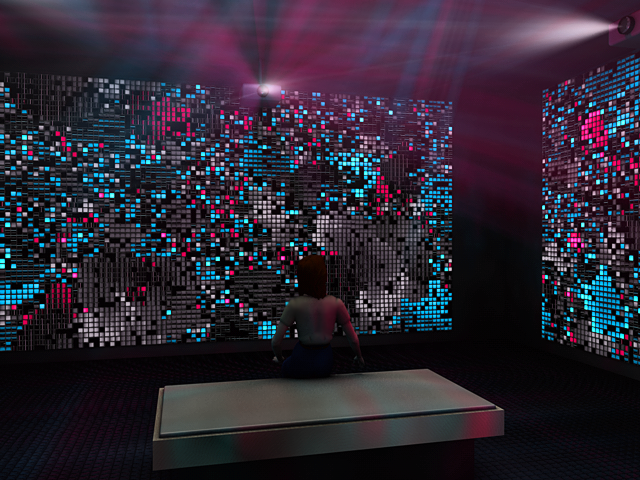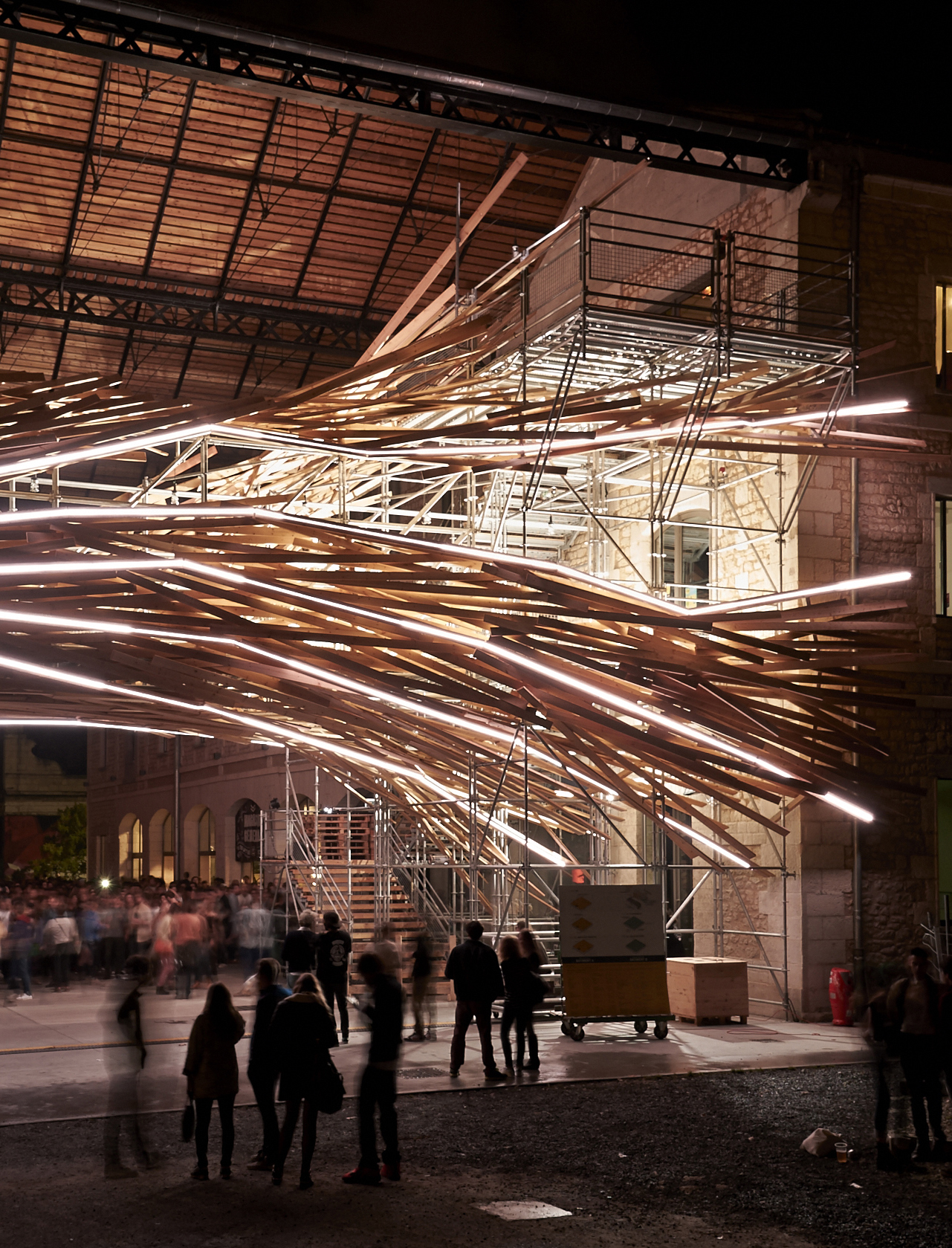
1024 architecture
VORTEX
Architectural fragment made from scaffolding, VORTEX has a raw wood skin highlighted by 12 lines of LED light as many generative and constructive project’s lines. Merging organic materials with new technologies, this hybrid architectural artwork wraps around and embraces the footbridge between the complex’s two buildings, revealing and enhancing the venue’s dynamic energy while working as a live visualizer of energy consumption. VORTEX evolves like a living organism; it breathes, trembles and emits pulses of light created using 1024’s MadMapper software. Manually controlled via a joystick, the structure can be synchronized to music and also displays its location’s energy consumption through a series of illuminated tubes. It ultimately answers to the ambient environment around it, capturing the Darwin Ecosystem Project’s unique energy consumption footprint, and converting it into data that is processed to spawn realtime visuals.
.
